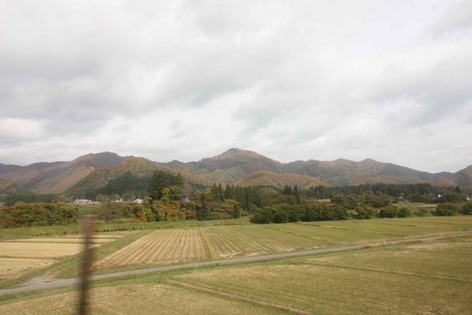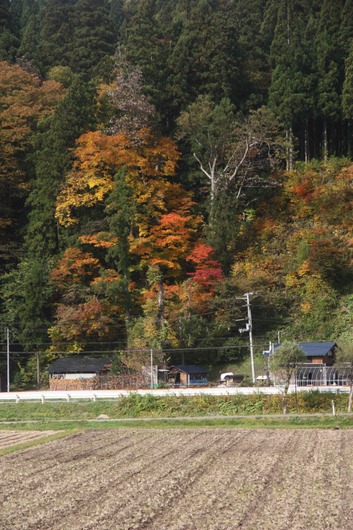 We started off across farmland, with stops at Ugo-o-ota and Saimyoji, which lead one to suspect there was likely to be a certain amount of picking up and dropping off. I wasn’t clued in to the back story, and wasn’t sure whether we were talking a tourist operation or a genuine local service. As time went on it was obvious local traffic was the major raison d’etre for the line but tourists in the spring and autumn allows the business to keep its nose above water.
We started off across farmland, with stops at Ugo-o-ota and Saimyoji, which lead one to suspect there was likely to be a certain amount of picking up and dropping off. I wasn’t clued in to the back story, and wasn’t sure whether we were talking a tourist operation or a genuine local service. As time went on it was obvious local traffic was the major raison d’etre for the line but tourists in the spring and autumn allows the business to keep its nose above water.
There was a lengthy delay at the third stop (Yatsu), where the station platform sat beside a siding, which allowed another motor headed in the opposite direction to pass, and we were off again at 9:18 with the prospect of a winding path through mountain valleys ahead.

Subsequent research revealed the existence of a nearby chestnut park where Japan’s largest (Saimyoji) chestnuts are grown and a vast katakuri-violet field, said to be the largest in Japan provides another attraction to encourage tourists to step off the train for a bit. Next time, maybe we will.
After Yatsu the route threads its way through mountains, ravines, and forests and the mountain leg began with a rapid fire sequence of three or four tunnels, before opening onto flat farmland again. Heading upwards through a landscape where the leaves were well and truly on the turn, particularly on the slopes, passing Matsuba, the original terminus for the Kakunodate line on the national railway system. From there you can head across to Japan’s deepest lake, Lake Tazawa, or relax at one of the area’s hot spring onsen resorts.
By Ugonakazato we were at the point where whole slopes had gone multicolour and a thirteen minute delay at Kamihinokinai to allow another train to pass gave people the chance to stretch the legs and grab the odd photo opportunity. It also gave me the chance to ascertain that I was, once again, the only foreigner in the vicinity.
The delay, I was informed was to allow the express service to pass presumably in the opposite direction, and equally presumably because we would shortly be passing through a long tunnel that would take us into bear country. With the express service, a rail motor of roughly equivalent age, passed, it was off again at 9:56. We hit the tunnel at Tozawa at 10:03 and left it less than a minute later, obviously a false alarm, followed by another a minute later , and a third and a fourth in the space of two minutes, a fifth at 10:05 but a minute later we were in for the long dark haul, apparently moving steadily higher, and emerging five minutes later.